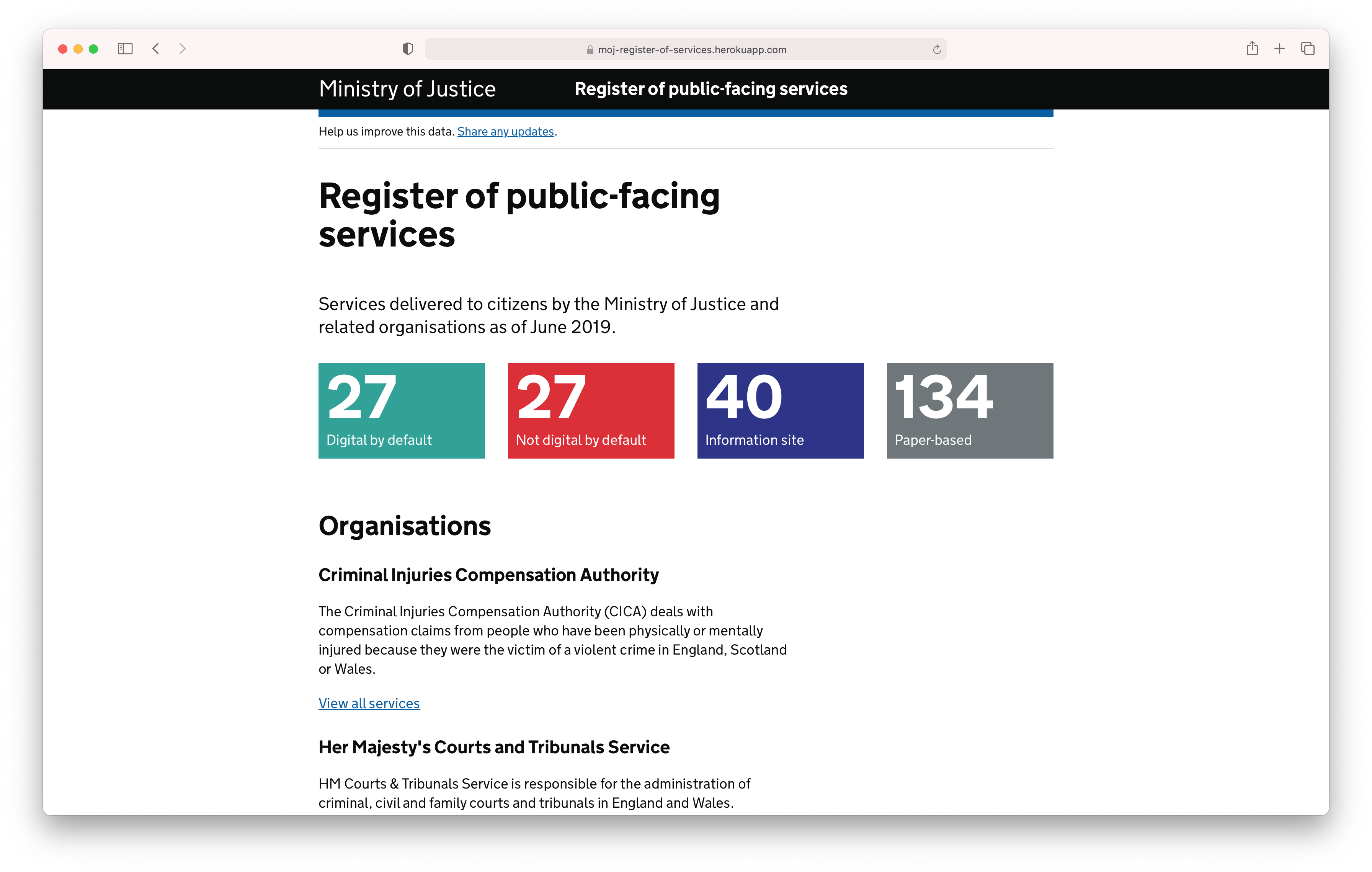Building a register of public-facing services at the Ministry of Justice co-authored with Matthew Solle
This post was first published on the MoJ (Ministry of Justice) Digital blog
The Ministry of Justice is made up of over 30 agencies and public bodies. From Her Majesty’s Courts and Tribunals Service (HMCTS) to the Prison and Probation Ombudsman. The department delivers a wide range of justice-related information services to complex and widely used public services such as ‘Get a divorce’, ‘Apply for probate’ or ‘Apply for legal aid’.
Earlier this year, a Central Digital project team in Ministry of Justice Digital & Technology set out to list all of the many transactional and information-based services that the Ministry of Justice provides to the public. The intention was to gain a proper overview of everything the department offered to the general public.
We listed all the services in their relevant organisations and then categorised them into four main groups:
- whether the service is digital by default*
- not digital by default
- is an information service
- or is a paper-based service
How we’re using the dataPermalink to section titled How we’re using the data
The idea was to fully understand the scope of the citizen-facing services the Ministry of Justice provides and to support how we prioritise the things we work on and make sure our central strategy is aligned with developing products and services that better serve the general public.
It will also help the department to look across the services it provides and not to look at products in isolation. It will then over time provide a useful means of how we audit the progress of what still needs to be done in terms of transforming the services that the department provides and gaining a better understanding of end-to-end services across policy areas and different departments. Government Digital Service (GDS) have recently published guidance on publishing a list of services.
We have called it the Register of Public-Facing Services.

Figure 1: The MoJ register of public-facing services.
The data provides an example of the challenges facing government departments looking to prioritise and transform the digitisation of their long tails of information and paper-based services in the complexity of a fast moving political and economic landscape.
Ministry of Justice currently has around 226 public-facing services of which:
- 27 are ‘digital by default’
- 27 are not digital by default (meaning they provide a digital service but that it is not digital by default according to the GOV.UK Service Standard)
- 40 are services providing information related to justice
- 134 PDF or Word forms that users have to download, print, complete, and then fax or post in
Moving forwardPermalink to section titled Moving forward
Even with the scale of the task of turning such a backlog of paper-based services into digital services, digital transformation must always balance proper service design, the understanding of qualitative and quantitative user data and departmental policy and business prioritisation, with digitising services at scale and at pace. A truly inclusive and accessible justice system is too important for us to still be wrestling with online PDFs in five years’ time.
*By digital by default we mean digital services that are so straightforward and convenient that all those who can use them will choose to do so whilst those who can’t are not excluded